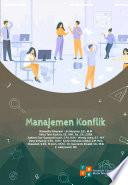
The Role of Character Education in America's Schools
Hearing Before the Subcommittee on Early Childhood, Youth, and Families of the Committee on Education and the Workforce, House of Representatives, One Hundred Sixth Congress, Second Session, Hearing Held in Washington, DC, March 1, 2000
This publication covers the hearing held on March 1, 2000, in Washington, DC, before the Subcommittee on Early Childhood, Youth and Families of the Committee on Education and the Workforce of the House of Representatives on the role of character education in U.S. schools. The publication contains the following: "Statement of Mr. Michael N. Castle, Chairman, Subcommittee on Early Childhood Youth and Families, Representative from Delaware"; "Statement of Mr. Dale Kildee, Ranking Member, Subcommittee on Early Childhood, Youth and Families, Representative from Michigan"; "Statement of Ron Kinnamon, Coalition Vice-Chairperson, Character Counts! Coalition"; "Statement of Diane Berreth, Deputy Executive Director, Association for Supervision and Curriculum Development"; "Statement of Esther Schaeffer, Executive Director and CEO, Character Education Partnership"; "Statement of Andrew Shue, Co-Founder, Do Something"; "Statement of Sheldon Berman, Superintendent of Schools, Hudson Public Schools"; "Appendix A--The written statement of Michael N. Castle, Chairman, Subcommittee on Early Childhood, Youth and Families, Representative from Delaware"; "Appendix B--The written statement of Dale Kildee, Ranking Member, Subcommittee on Early Childhood, Youth and Families, Representative from Michigan"; "Appendix C--The written statement of Ron Kinnamon, Coalition Vice-chairperson, Character Counts! Coalition"; "Appendix D--The written statement of Diane Berreth, Deputy Executive Director and CEO, Character Education Partnership"; "Appendix E--The written statement of Esther Schaeffer, Executive Director and CEO, Character Education Partnership"; "Appendix F--The written statement of Andrew Shue, Co-Founder, Do Something"; and "Appendix G--The written statement of Sheldon Berman, Superintendent of Schools, Hudson Public Schools." (BT)
- ISBN 10 : STANFORD:36105050152276
- Judul : The Role of Character Education in America's Schools
- Sub Judul : Hearing Before the Subcommittee on Early Childhood, Youth, and Families of the Committee on Education and the Workforce, House of Representatives, One Hundred Sixth Congress, Second Session, Hearing Held in Washington, DC, March 1, 2000
- Pengarang : United States. Congress. House. Committee on Education and the Workforce. Subcommittee on Early Childhood, Youth, and Families, Youth, and Families, Youth, and Families, Youth, and Families,
- Kategori : Education and state
- Bahasa : en
- Tahun : 2000
- Halaman : 132
- Google Book : https://play.google.com/store/books/details?id=20UM1sgJwiwC&source=gbs_api
-
Ketersediaan :
Hearing Before the Subcommittee on Early Childhood, Youth, and Families of the Committee on Education and the Workforce, House of Representatives, One Hundred Sixth Congress, Second Session, Hearing Held in Washington, DC, March 1, ...








